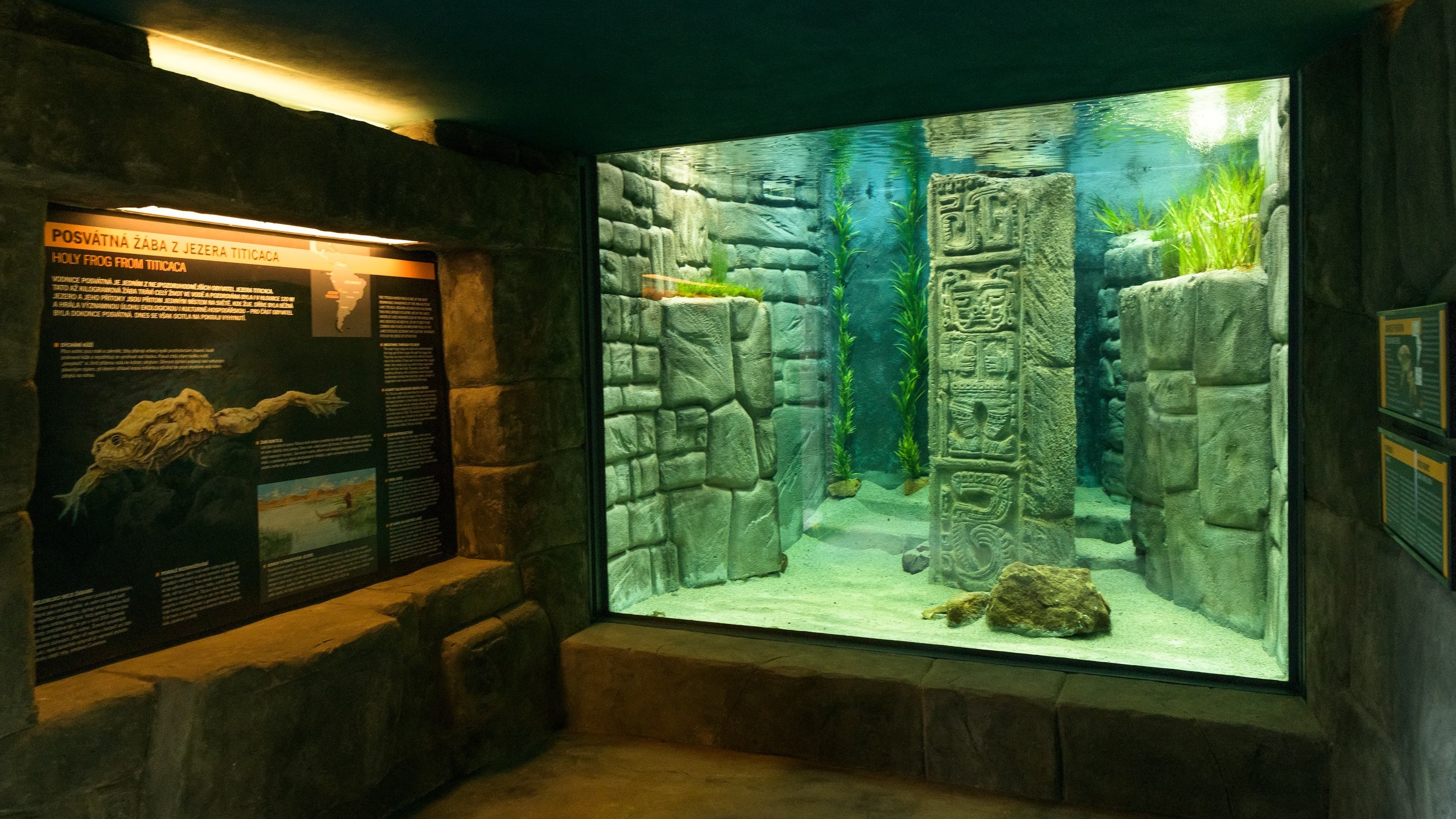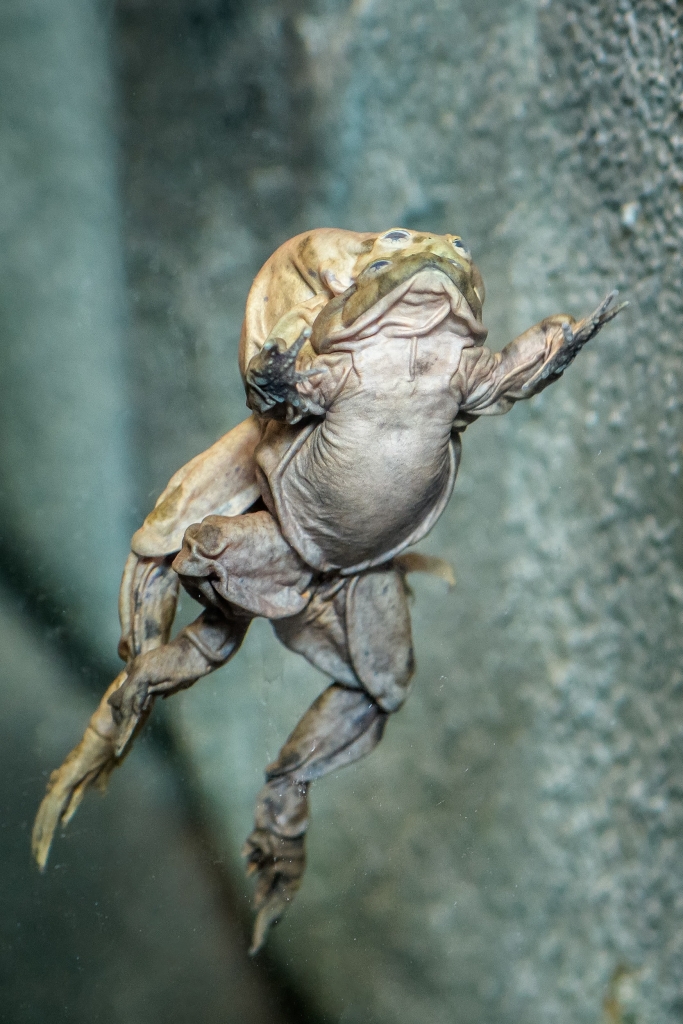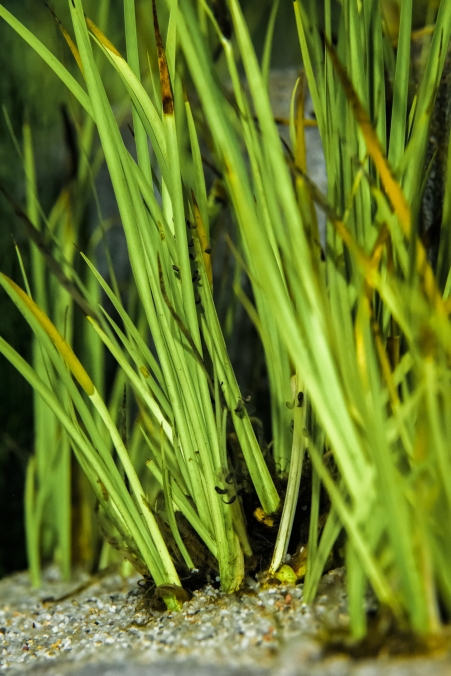The rare and remarkable Titicaca Water Frogs are now on show at Prague Zoo
07. 07. 2019
Prague Zoo has opened an exposition of Titicaca Water Frogs in the terrarium next to the Bororo Reserve. These remarkable frogs only live in Lake Titicaca, where they are critically endangered due to pollution. The tank for these exceptional frogs has a generous size of 3 x 3 x 2 metres and was inspired by the flooded temple that once stood on the shore of Lake Titicaca roughly 1,000 to 1,500 years ago.

In the terrarium next to the Bororo Reserve, Prague Zoo has opened an exposition for the Titicaca Water Frog, remarkable frogs that only live in Lake Titicaca, where they are critically endangered. Photo: Petr Hamerník, Prague Zoo
The Titicaca Water Frog draws attention at first sight. It never leaves the aquatic environment and breathes through its skin almost exclusively. However, due to the low oxygen content in the high-altitude Lake Titicaca, it must use as much of its surface area as possible, therefore it has very prominent folds on its sides, its back and its hind legs. Which is why it is sometimes referred to as the scrotum frog.
“Confirmation, or at least an indication, that we managed to create a suitable environment for the water frogs is the fact that they tried mating immediately after being placed in the tank. So, now visitors can watch pairs of our water frogs in an amplexus, in which the males tightly embrace the females,” explains Petr Velenský, the curator of reptile and amphibian breeding.

The first frogs were imported directly from Peru, which Lake Titicaca partly covers, by Denver Zoo in America. Last year, Denver also managed to reproduce this unique species – the first to do so in the northern hemisphere. Prague Zoo, along with certain North American and European zoos, joined the programme to create back-up populations in captivity by acquiring about twenty descendants of the frogs that had been seized in Peruvian restaurants, where they were to be consumed.
“It is a great honour for us that part of this breeding programme also came here to Prague Zoo. Of course, we will also try to contribute to the water frog’s survival – but unfortunately, without the conservation of Lake Titicaca, this will not be possible in the long term,” said Miroslav Bobek, Prague Zoo’s director.
The overall aim of the programme is therefore to also draw attention to the plight of this extremely important ecosystem, a goal that all the cooperating organizations are seeking. Both Huachipa Zoo and Titicaca National Reserve organize educational activities directly in Peru in order to support Lake Titicaca.









